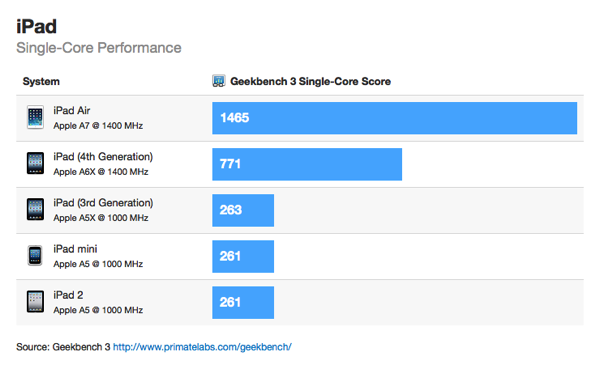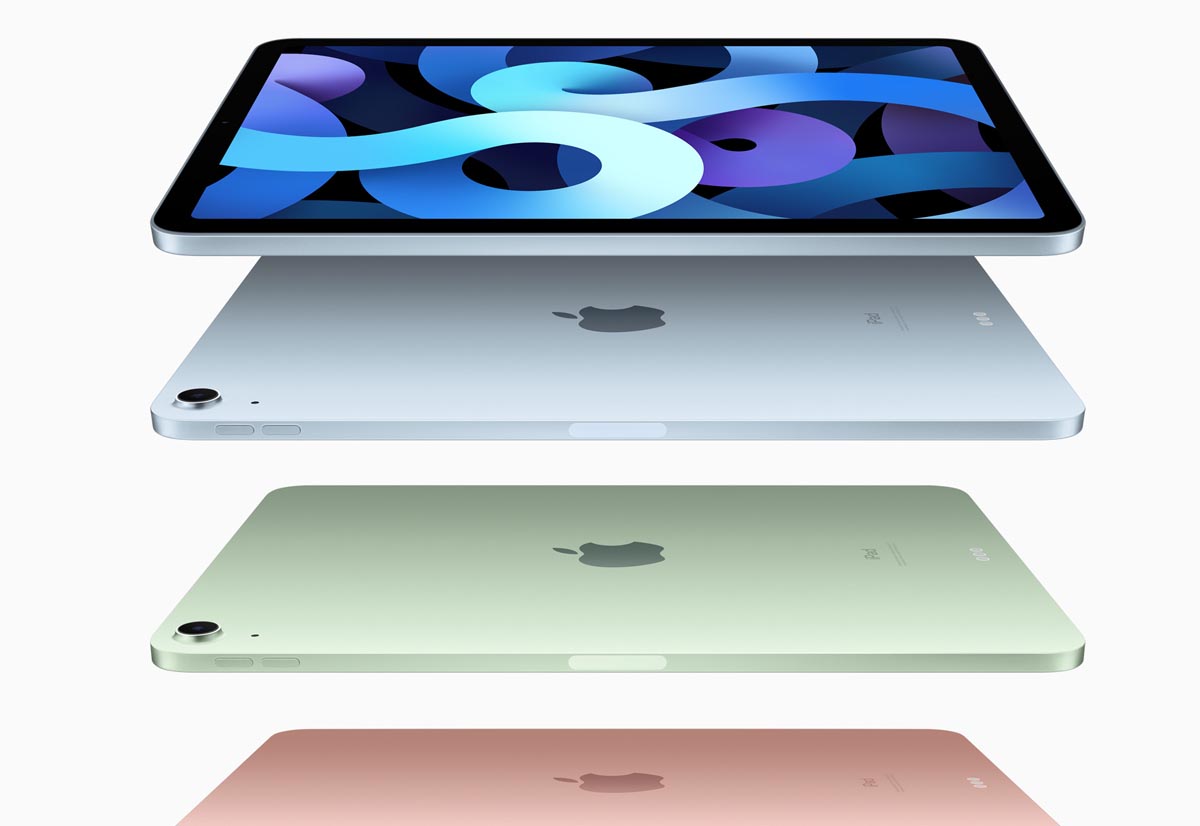

This gives everything a smooth sheen and makes games more responsive.
#IPAD AIR 4 GEEKBENCH PRO#
The display is one of the few areas where the pricier iPad Pro model is clearly better as it has a faster 120Hz ProMotion screen. USB-C is used in a much wider range of devices than Lightning these days too, so if you have a recent MacBook Pro you’ll be able to use the same charger here. You can connect USB-C dongles for file transfers for instance, or charge an iPhone. This replaces the Lightning port and opens up a whole new ecosystem of accessories along with far quicker charging.
#IPAD AIR 4 GEEKBENCH UPGRADE#
In certain lighting conditions, you’d be forgiven for thinking the blue was grey.Īnother big upgrade over the previous-gen Air is the new USB-C port on the bottom. I’m a big fan of the colours here too, with the green and blue versions (you can see the Sky Blue variant in the accompanying pictures) looking great, if very subtle. It feels great to hold and leads to a light tablet that can be held for extended periods without issue. The iPad Air 4 is very similar to the iPhone 12 in terms of the design and Apple has stuck with the same aluminium body that wraps around the sides. I’ve found the sensor to be reliable and fast, though it does take a while to adjust if you’re coming from an iPad Pro with Face ID – though I would imagine that’ll be very few people. This also works for other things, like authenticating payments and unlocking supported apps. To unlock the iPad Air, just press the power button, rest your finger and keep it there for a second or so. I’d recommend adding in multiple fingers straight away as you likely won’t be using the iPad Air 4 in the same orientation all the time. You just rest and move your finger around the sensor and after a few seconds, it’s saved. Setting up the Touch ID sensor is easy and will be familiar to anyone who has used a pre-Face ID iPhone or recent MacBook. It would have been great if this had made its way over to the iPhone 12, especially in a time where lots of people are wearing masks.

Going with a fingerprint instead of Face ID is likely a big cost-saver and I think I prefer it, especially when it’s as fast and reliable as it is here. Instead of sitting inside a home button, the biometric authentication method now lives in the slightly elongated (and very shiny) power button on the top. TouchID hasn’t been completely ditched though. The bezel around the 10.9-inch display is ever-so-slightly thicker than the Pro, however you’ll likely only notice this if you have both next to each other. Like the iPad Pro, the new Air has a bigger screen on the front that clings far closer to the edges and ditches the TouchID-enabled home button. After loving the squared-off, flat and boxy look of the iPad Pro (and now the new iPhone 12 line), it’s great to see it trickle down to the more affordable Air models. Design and screenįinally, we have a completely new look for Apple’s mid-range tablet and I couldn’t be happier. So, do all these improvements make for the easiest to recommend iPad currently on the market? Let’s dive in. There’s also an A14 Bionic chipset inside, just like the one you’ll find in the iPhone 12 range. You’ve got a new display, a sleeker design with a TouchID sensor embedded in the power button and a move to USB-C. This iPad Pro has now been updated, with the iPad Pro 2021 updating the processor to an M1 chip and a mini-LED screen. There’s a whole raft of improvements over the outgoing iPad Air with this new 2020 model, many of which have been plucked directly from the iPad Pro (2020). We are holding out for the 2021 iPad Pro (5th generation).The iPad Air 4 is a huge jump forward for Apple’s mid-range tablet, bringing down a number of previously Pro-exclusive features to a more affordable price. We no longer have the 2020 iPad Pro (4th generation), but it should perform as good or better than the 2018 iPad Pro. The 2018 iPad Pro (3rd generation) outperformed the 2020 iPad Air (4th generation) in 5 out of 7 tests. ( HIGHER Score = FASTER )ġ920x1080 Windowed ( HIGHER Frames per Second = FASTER )ġ440p OFFscreen ( HIGHER Frames per Second = FASTER ) Measures browser's ability to animate complex scenes. IPad Air 4 = 10.9-inch Liquid Retina display with 500 nits max brightness, A14 Bionic chip with Neural Engine IPad Pro 2018 = 12.9-inch Liquid Retina display with ProMotion tech and 600 nits max brightness, A12X Bionic chip with Neural Engine

October 24th, 2020 by rob-ART morgan, mad scientistĭoes the A14 Bionic chip in the 2020 iPad Air outperform the A12X Bionic chip in the 2018 iPad Pro?


 0 kommentar(er)
0 kommentar(er)
